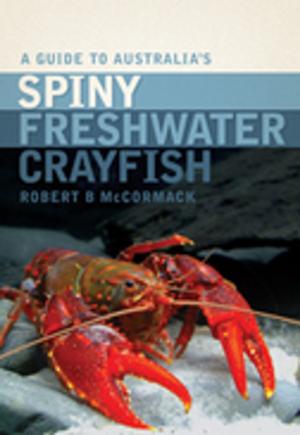The Biology of Squat Lobsters
Nonfiction, Science & Nature, Science, Biological Sciences, Marine Biology, Technology| Author: | ISBN: | 9780643104358 | |
| Publisher: | CSIRO PUBLISHING | Publication: | December 5, 2011 |
| Imprint: | CSIRO PUBLISHING | Language: | English |
| Author: | |
| ISBN: | 9780643104358 |
| Publisher: | CSIRO PUBLISHING |
| Publication: | December 5, 2011 |
| Imprint: | CSIRO PUBLISHING |
| Language: | English |
Squat lobsters of the superfamilies Chirostyloidea and Galatheoidea are highly visible crustaceans on seamounts, continental margins, shelf environments, hydrothermal vents and coral reefs. About 1000 species are known. They frequently feature in deep-sea images taken by submersibles and are caught in large numbers by benthic dredges. Some species are so locally abundant that they form ‘red tides’. Others support a variety of important fisheries. The taxonomy of squat lobsters has been intensively studied over the past few decades, making them one of the best known deepwater crustacean groups. As a result, they have attracted the attention of deep-sea ecologists who use them as proxies to test hypotheses about deepwater ecological processes and biogeography. Interest in squat lobsters now extends much more widely than the taxonomic research community and this work is a timely synthesis of what is known about these animals. The Biology of Squat Lobsters provides keys for identification and reviews the current state of knowledge of the taxonomy, evolution, life history, distribution, ecology and fisheries of squat lobsters. A striking feature of squat lobsters is their vivid coloration, which is revealed in a selection of spectacular images of different species. 2012 Whitley Award Commendation for Invertebrate Natural History.
Squat lobsters of the superfamilies Chirostyloidea and Galatheoidea are highly visible crustaceans on seamounts, continental margins, shelf environments, hydrothermal vents and coral reefs. About 1000 species are known. They frequently feature in deep-sea images taken by submersibles and are caught in large numbers by benthic dredges. Some species are so locally abundant that they form ‘red tides’. Others support a variety of important fisheries. The taxonomy of squat lobsters has been intensively studied over the past few decades, making them one of the best known deepwater crustacean groups. As a result, they have attracted the attention of deep-sea ecologists who use them as proxies to test hypotheses about deepwater ecological processes and biogeography. Interest in squat lobsters now extends much more widely than the taxonomic research community and this work is a timely synthesis of what is known about these animals. The Biology of Squat Lobsters provides keys for identification and reviews the current state of knowledge of the taxonomy, evolution, life history, distribution, ecology and fisheries of squat lobsters. A striking feature of squat lobsters is their vivid coloration, which is revealed in a selection of spectacular images of different species. 2012 Whitley Award Commendation for Invertebrate Natural History.















